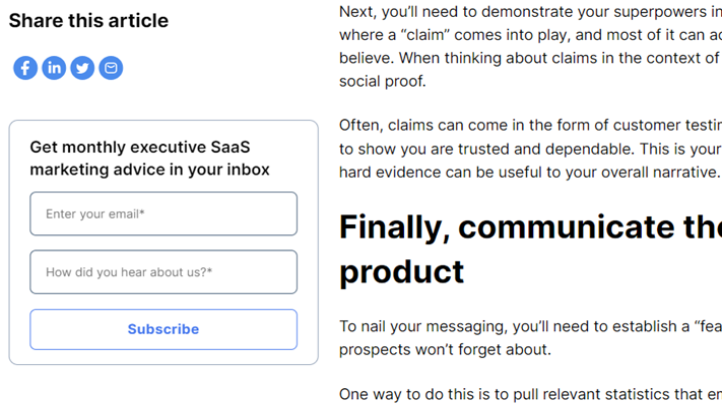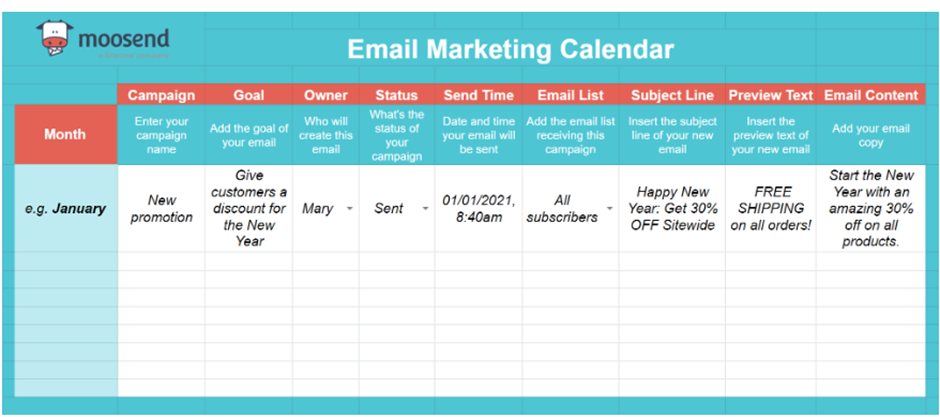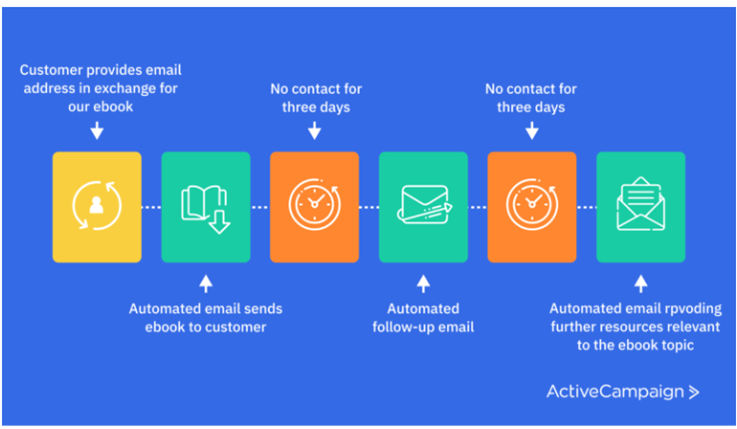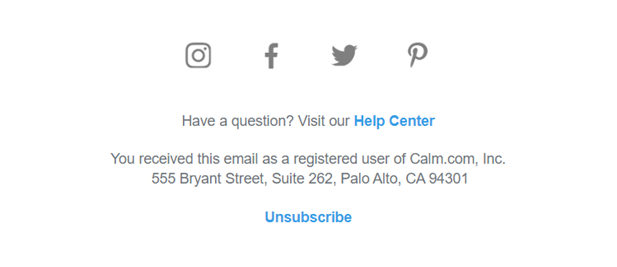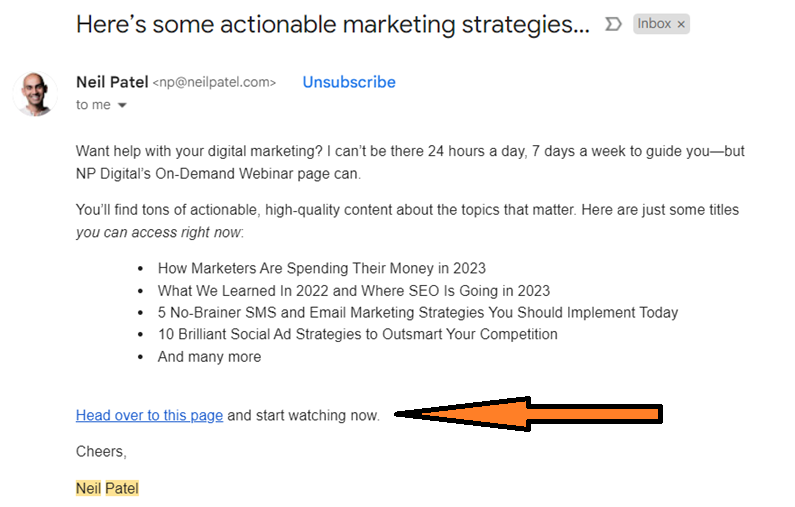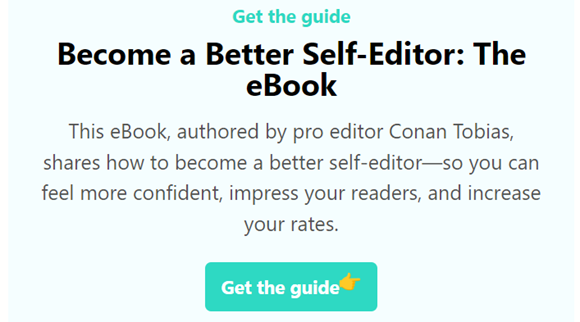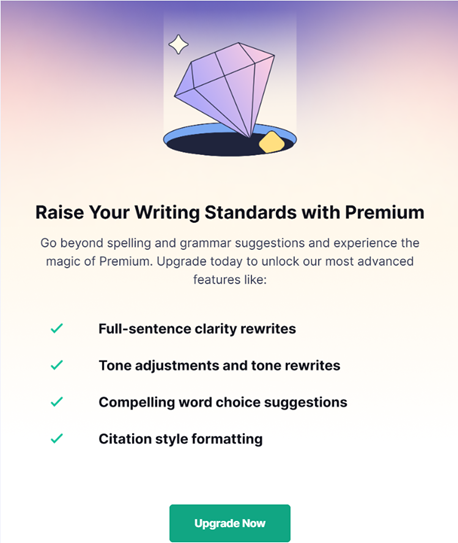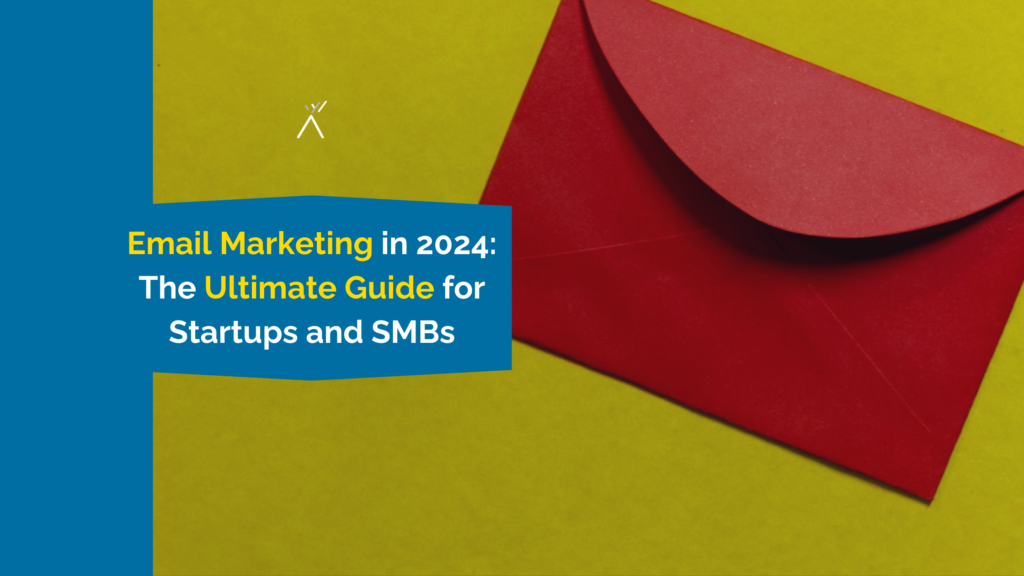
Email Marketing in 2024: The Ultimate Guide for Startups and SMBs
In the ever-changing business landscape, email marketing is a vital tool for founders and marketing leaders in 2024 and beyond. There’s a surprisingly common notion that email marketing is an ‘advanced’ marketing strategy, not typically suited for small businesses. We argue, however, that when done right, email marketing is probably the most lucrative and high-performance strategy in the marketing arsenal of any business.
In this comprehensive guide, we’ll cover everything you need to know about how to start with and excel in email marketing for your startup or small business.
Table Of Contents
- Is Email Marketing Right for You?
- Getting Started with Email Marketing
- Select and Setup the Email System
- Create a Strong Email Strategy
- Identify Goals and Objectives
- Define Your Target Audience
- Build Your Email List
- Segment Your List
- Create a Content Marketing Strategy
- Leverage Automation
- Measure Success Metrics
- Ensure Compliance and Deliverability
- Leverage Advanced Strategies
- Create Emails That Deliver Results
- Write Subject Lines that Captivate
- Craft Content that Connects
- Use Calls to Action that Compel
- Create Design that Delights
- Bonus Tips to Level Up Email Marketing
- Wrapping Up
Is Email Marketing Right for You?
Email marketing is a powerful tool for solopreneurs, startups, and small businesses to:
- Generate leads
- Boost brand awareness
- Keep your products and services top-of-mind for the prospects
- Sell, up-sell, and cross-sell your offerings
- Build a genuine connection with your customers through personalized engagement and helpful content
This has been backed consistently by several studies conducted by industry leaders over the years.
A survey conducted by Litmus in 2022 concluded that for each dollar invested, the return could be as high as $36.
Another survey by Campaign Monitor found that 57% of small business owners and decision-makers plan to increase spending on email marketing.
According to The 2023 State of Email Workflows Report by Litmus, the most effective marketing channel is Email marketing (41%), followed by Social media (16%), and Paid Search (16%).
Safe to say, for most businesses in both B2B and B2C sectors, email marketing should be a part of their overall marketing strategy.
Getting Started with Email Marketing
Assuming you are starting from scratch, it can get overwhelming to figure out how to create a strong foundation for your email marketing strategy.
In the following sections, we’ll cover all the basic steps you should follow, along with useful examples and tips.
A. Select and Setup the Email System
Choose an email marketing software based on your individual requirements and goals. Take your time to make an informed decision, as the right Email Service Provider (ESP) can significantly contribute to the success of your marketing efforts.
Here are some key factors to consider before finalizing your ESP:
- It offers all the desired functionalities
- It is user-friendly, intuitive, and easy to use for beginners
- It offers a free plan / free trial / demo
- It has a good sender reputation and ensures compliance with data protection regulations
- It can easily integrate with your current Martech stack
- It can scale as your email database grows in the future, without becoming too expensive
- It offers quick customer support and detailed training and/or user guides
To learn more about the various reliable email platforms available that you can compare and choose from, here’s a handy guide.
B. Create a Strong Email Strategy
Time and again we speak to marketers (or business owners who assume the role) who complain about email marketing not working for them. And in most of these cases, the glaring issue is that they don’t have a clear email marketing strategy laid out. Sending irregular emails to a cold database isn’t a winning strategy. So what is?
Below, we share the important steps that any business can follow to create a strong email marketing foundation. Starting with –
i. Identify Goals and Objectives
Set up concrete goals to remain focused on the big picture and align your email marketing strategy with the overarching business objectives such as higher revenue, better brand awareness, higher website traffic, more qualified leads, and higher customer retention.
An effective way of doing this is to set up SMART goals that are Specific, Measurable, Achievable, Relevant, and Time-bound. For example, a SaaS startup may set up a SMART goal of achieving a 15% click-through rate on its weekly newsletters by the end of the quarter.
ii. Define Your Target Audience
Next, define your target audience. Start by creating different buyer personas and understanding their needs, challenges, preferred communication styles, interests, hobbies, passions, and goals.
This in-depth exploration of the target audience helps businesses create highly relevant and personalized email content that leads to higher engagement rates, increased customer retention, and higher sales conversions and gets even the most disengaged customers back on track.
Research is an important step in understanding your audience well, and can be achieved by:
- Conducting customer satisfaction surveys
- Interviewing your sales team to understand their valuable customer insights
- Examining what your competitors are doing
- Identifying which of your blog posts receive the highest engagement
- Auditing your social media engagement
- Researching the purchase habits and behaviors of your customers
Now that you’re clear on the ‘why’ and ‘who’ of your email marketing strategy, let’s move on to the how.
iii. Build Your Email List
If your email list is very small and doesn’t grow organically, your results are going to remain stagnant too. Following are some of the most cost-effective and simple ways to start building your email list:
Organic Lead Magnets: Create short-form content that’s extremely relevant to your audience and provides quick value. Provide it as a freebie and ask for their email before they can download it. Examples of effective lead magnets include cheat sheets, workbooks, templates, checklists, ebooks, discount coupons, etc.
Following is an example of a free 7-day course being offered as a lead magnet, to access which interested people have to share only their first name and email address (low friction).
Opt-in Forms: Plenty of brands use this method to great results. An opt-in form is a static form located in the sidebar or footer on the blog page or other relevant pages on a website.
This enables the readers to sign up to your list right as they are perusing content they are interested in, without leaving the web page they are currently on.
Other ways to grow your email list:
- Use strategic partnerships with other brands to cross-promote each other’s offerings. For example, your trusted partner brand gives a shout-out to your brand in their newsletter and encourages their audience to sign up for a free trial of your product/service. In return, you do the same for your partner brand.
- Use paid advertising on platforms like LinkedIn, Google, Meta, etc. where your target audience is active, and drive traffic to a dedicated landing page that offers the lead magnet. This option is especially useful for businesses that don’t get a lot of organic traffic or whose lead-magnets include limited-time offers like discount coupons and event registrations.
- Finally, explore the traditional methods of collecting emails physically using (digital) pen-and-paper sign-up sheets at in-person events, exhibitions, point-of-sale at retail locations, etc.
iv. Segment Your List
Once your email list starts growing, it’s important to segment it properly to improve the effectiveness of your messaging, and to deliver enticing, personalized offers that get maximum engagement, even from disengaged customers.
Segment your email database by grouping audiences who have similar demographics, interests, hobbies, motivations, purchase history, etc.
For example, a company that sells accounting software to startups and mid-sized businesses has two different audience groups—the end customers (accountants) and the decision-makers (founders or procurement department). Both these groups have different requirements and motivations to buy, and hence, instead of sending a common email to everyone on the list, send tailored communication to both these segments separately.
v. Create a Content Marketing Strategy
No one likes hard selling. Instead of being too sales-y and pushing your products on your email list, put the customers first and send them content that actively addresses their pain points, provides valuable insights, and adds real value.
An effective way to do so is to follow the 80/20 principle, which involves providing valuable content 80% of the time—focused on building relationships, communicating your expertise, and gaining trust among your customers. The rest of the 20% of the emails should focus on sales and promotion of your offerings.
By consistently receiving valuable content, your audience becomes more receptive to your promotional emails, ultimately driving sales. So, how do you go about creating such content? –
Create a detailed content calendar: The best email marketing strategists plan every important detail before sending out emails. Ideally, you should plan for 3-6 months in advance, but at least one month prior if that’s not possible. In your email marketing calendars, include:
- Goals
- The types of email (promotional emails, lead nurture campaigns, newsletters, etc.)
- Customer segments
- Key dates
- Links to email content
- Assignees (who is responsible)
While there are numerous free calendar templates available on the internet, the one below developed by Moosend is a good format to start with. Modify it to fit your process:
Image Source
vi. Leverage Automation
This is a bit more advanced step that helps in delivering timely and relevant emails to the required email segments, without constant manual effort.
By automating repetitive tasks such as sending welcome emails, doing follow-ups, and creating customer segmentation, you can save time and resources while maintaining a consistent and targeted approach.
Many different types of email sequences can be automated, the most common ones of which include:
- Welcome series: Onboard new subscribers and nurture them with relevant content
- Abandoned cart emails: Recover lost sales by reminding users about their abandoned purchases
- Trigger-based campaigns: Send personalized emails based on user actions (birthdays, anniversaries, purchase milestones, etc.)
- Personalized recommendations: Suggest relevant content or products based on individual preferences
Following is an example of a hypothetical lead-nurturing email sequence spanning 5 weeks, starting from when the user signs up to receive a free resource. Based on the trigger conditions, emails at different touchpoints are automatically sent to the prospective customer.
Image Source
Thus, automation greatly reduces the time and effort required to run multiple campaigns, especially when there isn’t a dedicated email marketer available to manually send various emails to a large email list at the right time.
vii. Measure Success Metrics
Metrics and KPIs are an integral part of any well-rounded email marketing strategy and should be directly tied to the goals and objectives. To keep things simple initially, focus on just one goal and its associated KPI.
Following are some of the most important metrics that help you assess how well (or poorly) your emails are performing:
- Open rate: This is the percentage of recipients who open your emails, and indicates the effectiveness of your subject lines and generates interest.
- Click-through rate: This is the percentage of recipients who clicked on a link within an email, and provides a measure of recipient engagement with the email content.
- Conversion rate: This is the percentage of recipients who take the desired action, and reflects the effectiveness of your emails in driving meaningful outcomes.
- Bounce rate: This is the percentage of undelivered emails, and highlights potential list quality or deliverability issues.
- Unsubscribes: This is the percentage of subscribers who opt out of receiving further email campaigns. A high unsubscribe rate can potentially hurt a business’s reputation and deliverability.
- Return on Investment (ROI): This is arguably the most important metric for most businesses investing in email marketing. While the basic formula to calculate RoI is ‘Sales (Growth From Email Marketing – Email Marketing Cost ) / Email Marketing Cost’, there are other more specific ways of calculating the RoI of email marketing as well, explained in this blog post.
Set up a weekly, monthly, and quarterly email analytics dashboard to review the results of your email marketing efforts, find areas of improvement, and course-correct as required.
viii. Ensure Compliance and Deliverability
This is a critical but oft-ignored step that can have legal ramifications. Complying with email regulations is also important to respect the audience’s desire to know how and why their information is being used.
Following are the recommended best practices to ensure your emails meet the legal compliance standards and are optimized for delivery:
- CAN-SPAM Act: For emails to adhere to email marketing regulations, they should have:
- Your company name and address, usually in the footer
- Easily visible unsubscribe links, again usually in the footer
- Valid email addresses in the ‘From’ and ‘Reply-To’ fields
- Non-spammy or click-bait subject lines
Note: This is not legal advice. Visit the FTC’s site to learn more about the CAN-SPAM laws.
- General Data Protection Regulation (GDPR): GDPR is about giving your customers the right to decide and choose whether and how they want to receive your emails.
Note: GDPR is applicable only for businesses operating in or marketing to the European Union. For more details, check out the GDPR guidelines here.
Other Tips and Recommendations:
- Ensure your emails reach the recipient’s primary mailbox instead of spam by getting your email address whitelisted. To accomplish this, request your new subscribers to add your email address to their address book; explain how they can do so in your welcome mail.
- Ensure your subject lines don’t get flagged for spam by the Internet Service Providers (ISPs). To accomplish this, avoid using multiple exclamation points, words in all caps, and trigger words, like “opt-in,” “click below,” and “order”.
- Regularly clean your email list by removing unsubscribed or dormant emails, to maintain high deliverability rates.
- Make it easy for users to unsubscribe from your emails whenever they wish. Most ESPs automatically add a clearly visible ‘unsubscribe’ link in the footer. You may also configure the settings such that the subscribers can choose to either opt out of certain specific lists or unsubscribe from all your lists in a single click.
ix. Leverage Advanced Strategies
Mastered the basics and now looking for more advanced strategies to level up your email marketing game? Below is a good list to try next:
a. Conduct A/B testing: Not all emails are created equal. What works for a particular segment may not for others.
Experiment with different subject lines, content formats, calls to action, and send times to optimize results for each of your email segments. The process of creating optimal emails may take time but is definitely a good investment of time and effort in the long run.
Here’s how you can conduct A/B testing the right way:
- Test only one parameter at a time (e.g. subject line, CTA, images)
- Create two versions of the same email, changing only the selected parameter
- Send both versions of the email for a period of time
- Analyze the results and keep the version that performed better
- Test a new variable and repeat the process
b. Collect feedback: Conduct surveys, polls, and user interviews to learn what resonates with your audience. Based on this feedback, create more targeted messaging and content that the audience wants to receive from you. This not only makes your customers feel valued but also removes a lot of guesswork on your part.
c. Utilize video: Videos can be an excellent way to engage and drive conversions. This usually works well for demo videos, testimonials, podcasts, etc. You may choose to create an attractive thumbnail and link it to the actual video hosted on a platform like YouTube, or simply include a hyperlink within the normal text as shown below:
C. Create Emails That Deliver Results
Now that you the foundation of your email marketing strategy is ready, it’s time for implementation.
Following are the main building blocks of a high-performing email:
a. Subject Lines that Captivate
The subject line is probably the most important piece of content you’ll write for your emails, as it can be the key reason why (or why not) someone will open your email in the first place, especially when they are not actively waiting for it.
There are several ways to create catchy subject lines that entice the recipient to open your email, while also ensuring they aren’t clickbait-y. Depending on your brand’s tone of voice, you may want to use one or more ways of crafting captivating subject lines, including personalization, emojis, numbers, curiosity hooks, urgency triggers, and more. Keep the subject lines short, around 7 words or less, for maximum impact.
Finding the winning formula for your email list may require some trial and error in the beginning, and A/B testing can be a useful way to approach this.
Following are some different types of subject lines that are known to drive higher email open rates:
- Urgency triggers: “Final Call: Exclusive Free Marketing Insights Available Only Till Midnight”
- Personalization: “Here’s How You Can Scale Your Startup Fast, SJ”
- Curiosity triggers: “5 Marketing Hacks Your Competitors Don’t Use (Yet)”
Bonus Tip 1: Optimize the pre-header / preview text as it gives you more words to work with. Use the preview text to add important details, emphasize a takeaway, or include a specific call to action. Together, the subject line and preview text can be used as a smart sales message, encouraging the recipient to take action while also displaying your brand’s personality.
Here are some examples:
Bonus Tip 2: Find out how strong your subject line is, and improve its score further, by using free tools such as this one by CoSchedule.
b. Content That Connects
There are many other ways of crafting messages that resonate with your readers, but this requires a good understanding of your audience’s needs and preferences. For some brands, ‘storytelling emails’ that weave narratives to drum up the audience’s emotions work wonders, while for others, ‘value-driven emails’ that focus on educating, entertaining, or solving problems are the way to go.
The important point to remember is that your reader is likely very busy and will spare only a few seconds to decide whether to read your email fully or not.
For example, if you are a SaaS company whose audience is primarily CXOs and department heads with very limited time and attention span, your emails should be value-based and easily skimmable. For this, use:
- Short paragraphs
- Enough white space
- Descriptive headings and subheadings
- Bolded main points
- Value-rich images
- Visible and enticing call to action
In the email below we see how the most important information is provided right in the main header image, with the details followed inside the email body. Each paragraph has only a few lines, the key details are in bold, and the CTA is clear and to the point.
Once you have a good understanding of your audience, you’ll be able to craft much more effective emails for them.
c. Calls to Action that Compel
Arguably the most overlooked aspect of emails is the call-to-action and the way it is incorporated in the overall messaging. The common mistakes related to CTAs we see quite often include:
- Unclear CTA text such as ‘Click Here’ (why?)
- Ineffective placement of the CTA—hidden among a sea of text or not highlighted properly or not placed at the point where the reader is ready to take action
To make sure your CTA accomplishes its goal of encouraging the readers to take action:
- Use clear and concise instructions: “Download Now,” “Learn More,” “Get Your Free Trial”
- Use of powerful verbs: “Start,” “Boost,” “Transform”
- Conduct A/B Testing: Experiment with different CTAs to find what works best
- Use an attractive button design or make the hyperlink stand out if using plain text CTA
Check out the following examples of some effective CTAs:
d. Design that Delights
Visually appealing email designs that include relevant (but not too many) images, GIFs, and videos, can help break up the monotony of the text and improve reader engagement.
Not all brands create design-heavy emails though; we increasingly see emails that are almost exclusively text-based and still perform really well due to the value they provide to the audience.
Should it make sense for your business and target audience, use branded design templates to maintain branding consistency and save time on each new email.
Bonus Tips to Level Up Email Marketing
We have covered all the basic building blocks of a successful email strategy. However, to take yours to the next level, we’re sharing below some useful tips and hacks:
- An email’s open rates depends on various factors like the day and time it’s being sent on, and the interests, requirements and demographics of the target audience, among other things. According to this post by Brevo, emails sent on Tuesday and Thursday usually see the highest open rates, while those sent on Wednesdays had the highest CTRs.
- More than half of emails (~55%) are now being accessed on mobile devices. Your emails must, therefore, be optimized for devices other than desktops and laptops as well.
- Keep abreast with the latest email marketing statistics to continuously improve your email marketing performance. For example, check out this immensely useful List of Email Marketing Stats for 2023 complied by Hubspot.
- Make it easy for your audience to identify your brand when they open your emails. For this, include your logo at the top and use your brand colors throughout the email design, and use such a branded template consistently.
- Instead of using a “no-reply” sender address, ensure the ‘Reply To’ email address is an official one. This indicates that your email inbox is being monitored by a real person, which humanizes your brand and increases user trust.
Wrapping Up
When done right, email marketing is a great strategy for many businesses, especially startups and small businesses. It can bring in new opportunities, increase sales, make your brand better known, and take your business to new levels.
This guide covers all the basics to help you start strong with your email marketing. But if you’re looking for some personalized help, schedule a free 1:1 call with us to explore how we can help out.
Found This Article Valuable? Share!
Shubhi is a marketing consultant with 13+ years of experience working with global organizations across sectors and now as an entrepreneur. She specializes in marketing, branding, and content strategy, and is passionate about helping startups and SMBs scale their businesses profitably. Shubhi is an alumna of IE Business School (Madrid) and SIBM (Bangalore), and is currently building and growing ‘Exemplarie’.



